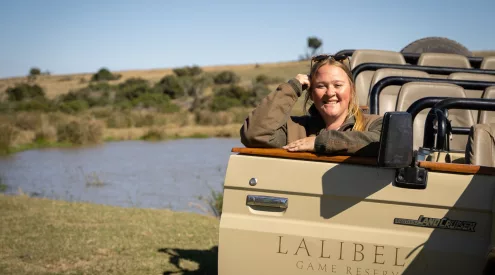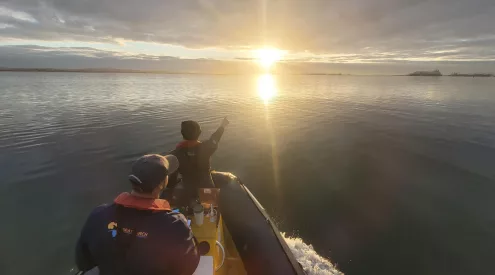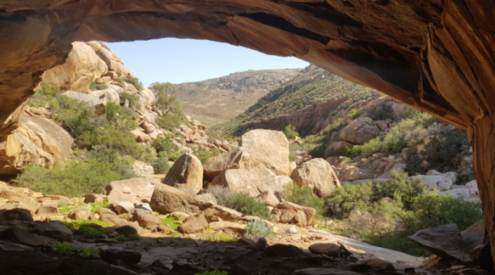The Tsitsikamma National Park coastline is one of the more beautiful in the country. High cliffs covered in fynbos, deep gorges bedecked with indigenous forests and dark, clear rivers which flow from the Outeniqua Mountains into the sea.
The Storms River is one of the most impressive of these waterways. The gorge is several-hundred-metres deep in places, especially near the mouth of the river, which is near the main restaurant area of the national park. There’s a fantastic suspension footbridge over the river mouth, but the best way to see the river and the gorge is with a paddle in your hand.
However, the river is not for novices, and it’s highly recommended that you go with someone who knows the terrain, and respects the power of nature. We met up with adventure guide Marthinus van der Westhuizen, who runs Untouched Adventures, a company which specializes in taking guests up the Storms River on canoes, among many other activities.
It makes for an impressive few hours. When we arrived, the sea was too rough to paddle into the mouth, so we hitched a lift on the SANParks tourist boat (which also takes people up the river – but if you want to take your time and enjoy the marine life along the way, I suggest you take a canoe with Marthinus).
Once we were in the river itself, safe from the ocean swell, we got onto the canoes which were tied up alongside the gorge. From there we paddled up the calm river, from the mouth, with Marthinus and his guide Stanford Kosana.
Because this stretch of coastline is a marine protected area, there is plenty of sea life which make use of the sheltered estuary – including lots of stingrays, young ragged-tooth sharks, otters, seals, and fish like grunter and cob. ‘Even the humpback whales come into the estuary to rest,’ Marthinus told me. Fish eagles, Knysna loeries and kingfishers can be regularly seen or heard in the gorge.
Marthinus also offers scuba diving to visitors, but you’d have to be braver than me to dive in these dark, cold waters – especially when there are lots of sharks around! But Marthinus tells me that they’re usually small sharks, about 1,5 metres in size, and aren’t a threat really.
You’re more likely to get your foot nibbled by an otter, which actually happened to Marthinus once, ‘I was scuba diving, and I felt something tug on one of my fins so I turned around, and an otter was trying to pull the fin off my foot! He obviously was confused by my fin, and thought it was a fish!’
The salt water – because it is heavier – sinks to the bottom, while the fresh water of the river lies on top, so when you scuba dive, you descend through the dark, tannin-rich fresh water, into the salty water which is much lighter.
Because these waters are protected from fishing or any other exploitation, the fish have become used to people scuba diving and are very tolerant of people. ‘They’ve become habituated to human presence,’ Marthinus explained.
Thanks Marthinus and Stanford for a great morning. I may meet up with them again in January next year, when I visit the Baviaanskloof: Marthinus is thinking of starting a canoeing route there. Sounds epic!
Find the best places to stay near Storms River with Getaway Accommodation.
For more, go to www.yearinthewild.com and www.facebook.com/yearinthewild. Thanks again to my sponsors for making it all possible. CapeNature, South African National Parks, Ezemvelo KZN Wildlife, Eastern Cape Parks, iSimangaliso Wetland Park, Ford, Total, Evosat, Conqueror Trailers, Vodacom, Digicape, Lacie, Frontrunner, Safari Centre Cape Town, K-Way, EeziAwn, National Luna, Nokia , Goodyear, Global Fleet Sales, Hetzner, Clearstream Consulting and Escape Gear.

















